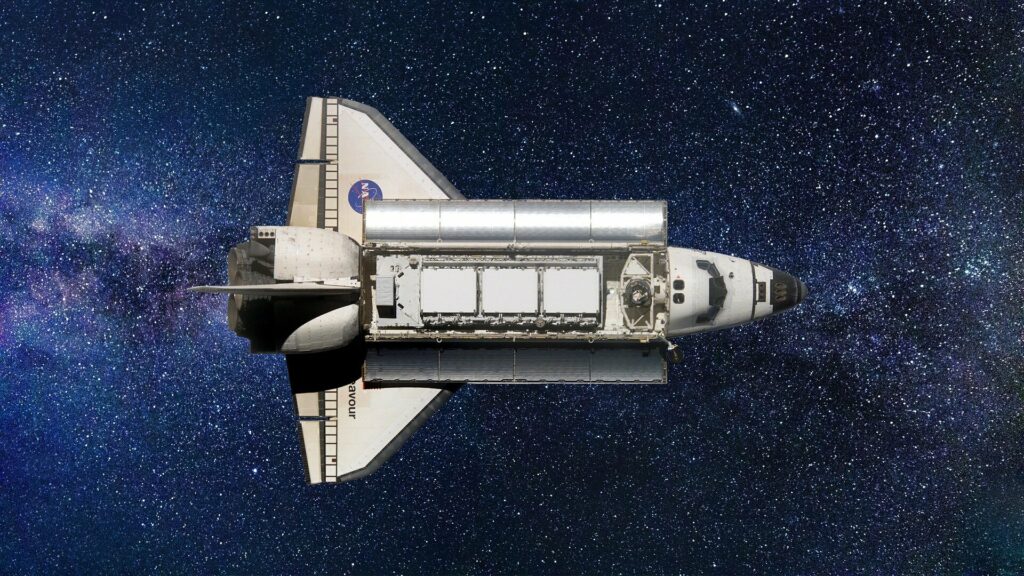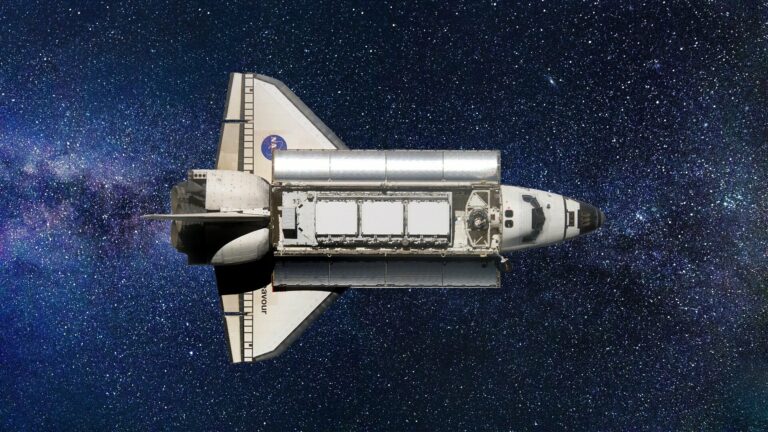Endeavour Space Shuttle gracefully finding its permanent museum residence.
Assuming there are no weather delays, the space shuttle Endeavour is set to undergo its final and historic lift starting on Monday night. This maneuver is unique and has not been performed by any other retired orbiter. The plans for this move, which involves placing the shuttle in the new Samuel Oschin Air and Space Center, have been in progress for over ten years. Initially, a pair of cranes will lift the shuttle from a horizontal position to a vertical one. The spacecraft will then be attached to a sling, a large metal frame that will provide support during the move. An 11-story crane will raise the tail of Endeavour, while a 40-story crawler crane, approximately the height of City Hall, will lift the nose.
Once the shuttle is properly aligned, the shorter crane will be disconnected, leaving the taller crane to gently swing the orbiter into its final position and lower it for attachment to the giant orange external tank. This external tank is connected to twin solid rocket boosters, which are in turn connected to the foundation of the exhibit.
Once this process is complete, and as the rest of the museum is constructed in the following years, Los Angeles will become the home of the only retired space shuttle displayed in a full-stack arrangement, as if it were ready for launch.The move will consist of two parts. The first part, known as the “soft mate,” is scheduled to commence around 10 p.m. on Monday and may take several hours.
According to Jeffrey Rudolph, the president of the California Science Center, this initial phase involves lifting the shuttle into the building and positioning it close to the orbiter.

The next step involves securely positioning Endeavour to the external tank, a task that requires utmost precision and delicacy. According to Rudolph, this is crucial as it ensures that all the necessary equipment is correctly aligned with the orbiter. Additionally, some components inside the orbiter are quite fragile, so the process must be carried out slowly and cautiously.Once this step is completed, Rudolph explains that everything will still need to be tightened, but the overall movement will be considered finished. By Thursday, it is expected that everything will be securely connected, with all bolts torqued and fastened permanently. At that point, the sling will be removed, signifying the completion of the task.
However, it is important to note that the schedule may be subject to change due to weather conditions. If strong winds are present, the move may need to be postponed for safety reasons.Rudolph emphasizes that after this process, there should be no further changes until the museum opens the payload bay doors in a few years for public display of Endeavour.
Lifting the shuttle poses different challenges compared to the external tank, which was already completed earlier this month. The tank’s size was such that there was less than an inch of space between it and the solid rocket boosters during the lowering process.In the case of the Endeavour orbiter, which is the final space shuttle ever constructed, the crew will face the task of maneuvering an object with a wingspan of 78 feet. Rudolph highlights the importance of achieving perfect alignment and levelness, as well as handling the orbiter with extreme care.
Rudolph further explains that there are specific areas where the lowering process becomes more challenging due to the tight fit with the wings and vertical stabilizer. The ultimate challenge lies in successfully “capturing” the orbiter at the three attachment points.Given that Endeavour is essentially a glider with a substantial wingspan, adverse weather conditions, particularly strong winds, can make the descent more difficult to control.
Rudolph expressed that cranes and wind are not a good combination. He mentioned that this particular construction project involving cranes and working outside at a construction site is unprecedented. The assembly of the shuttle, along with its external tank and solid rocket boosters, took place inside NASA’s Vehicle Assembly Building in Florida. This building is one of the largest in the world, towering over 50 stories and equipped with numerous cranes and platforms for the task.In Los Angeles, the construction crews had to meticulously erect, dismantle, and reconfigure scaffolding to ensure proper connections. There were also last-minute changes during the arrival of the external tank, which required the crew to quickly adjust the scaffolding while lowering it.
The lifting process for the orbiter is expected to take one night, whereas the external tank lift took two nights. The first night was delayed due to windy conditions, but work commenced in the morning before being temporarily halted. On the second night, the tank was successfully lowered further between the solid rocket boosters.Officials are aiming to livestream the upcoming lift, as the livestream for raising the external tank encountered technical difficulties. They are currently resolving these issues in preparation for Monday’s orbiter move.Endeavour, having completed 25 space missions between 1992 and 2011, made its final flight in 2012. It concluded its journey at Los Angeles International Airport and was then transported over three days through city streets to the California Science Center. For 11 years, Endeavour was displayed in a temporary hangar called the Samuel Oschin Pavilion while the museum worked on a permanent home. On December 31, Endeavour was taken off display.
The full-stack configuration of the shuttle is so tall that the new museum will be constructed to rise 20 stories in order to accommodate it.
To ensure unobstructed views, the building has been designed without any vertical supports apart from its walls. The structure will incorporate a diagonal grid system created by engineering firm Arup and will be adorned with a stainless-steel facade. Similar “diagrids” have been utilized in other tall buildings, such as the 46-story Hearst Tower in New York City, the iconic 40-story curved Gherkin skyscraper in London, and a section of the egg-shaped London City Hall.
Once the entire shuttle full stack is in position, the remainder of the museum will be constructed around it. Considering the construction timeline and the additional time required for exhibit installation, it may take a few years before the museum is accessible to the public.
This article is republished from PhysORG under a Creative Commons license. Read the original article.
Do not forget to share your opinion with us to provide you with the best posts !




0 Comments